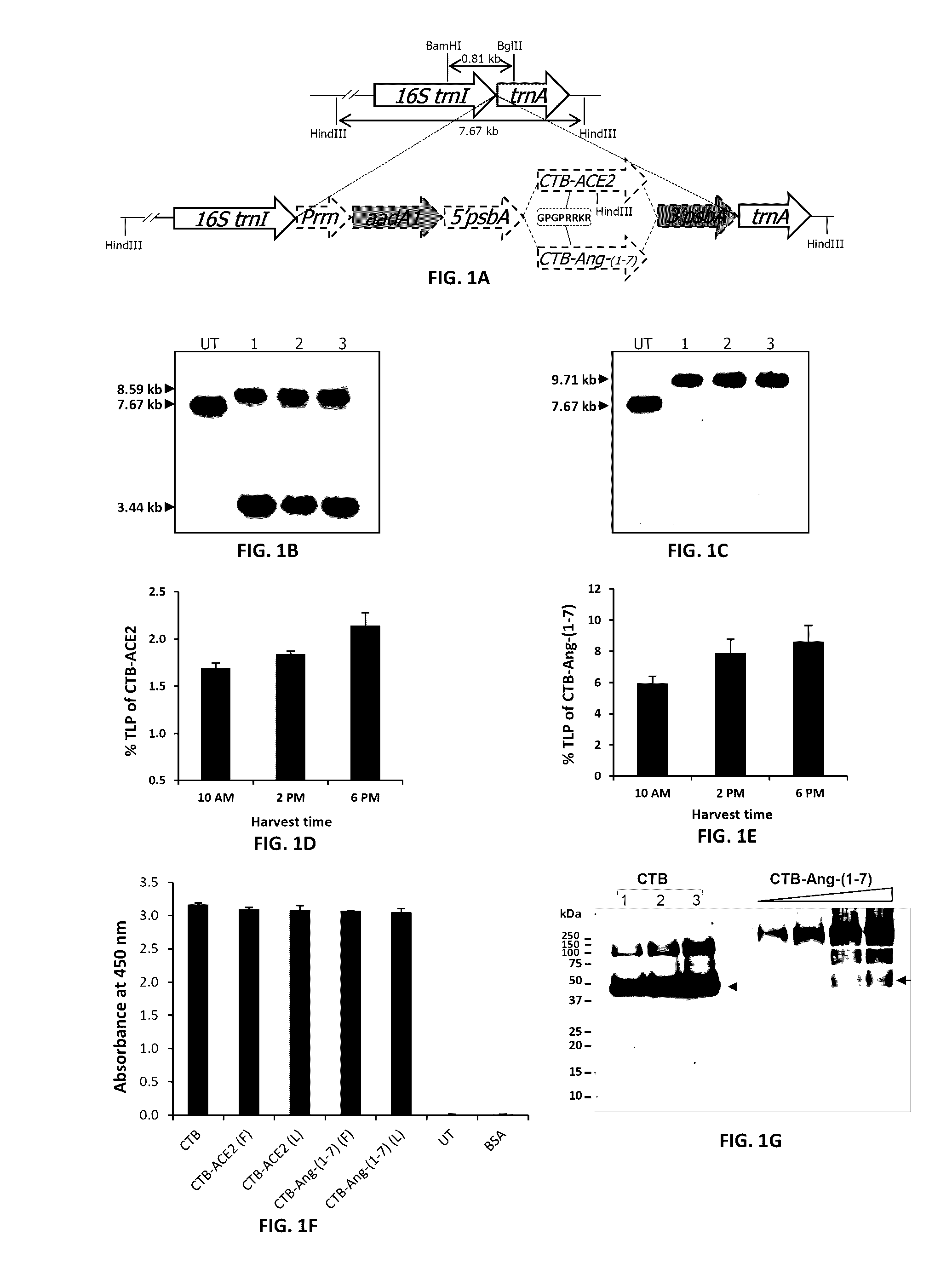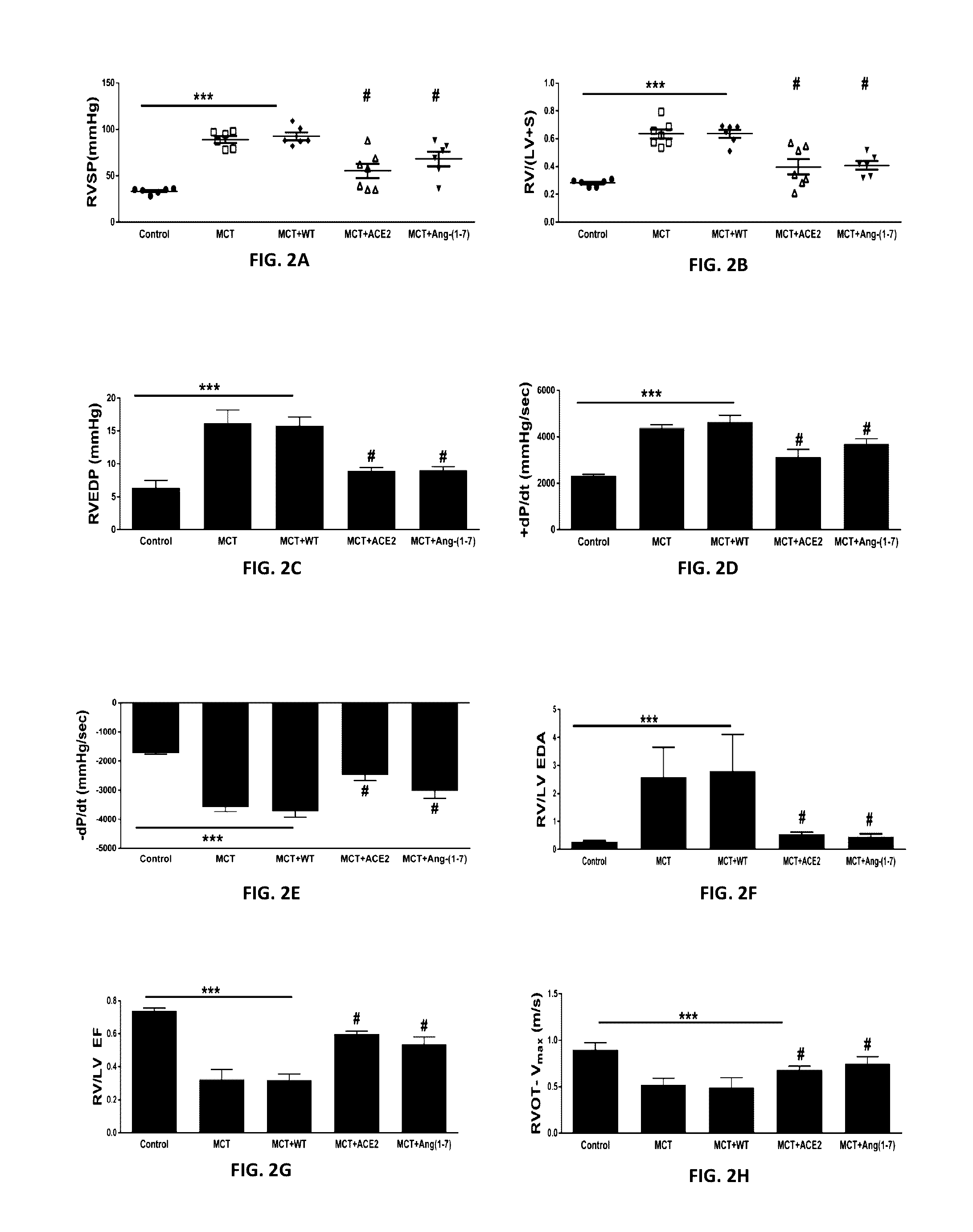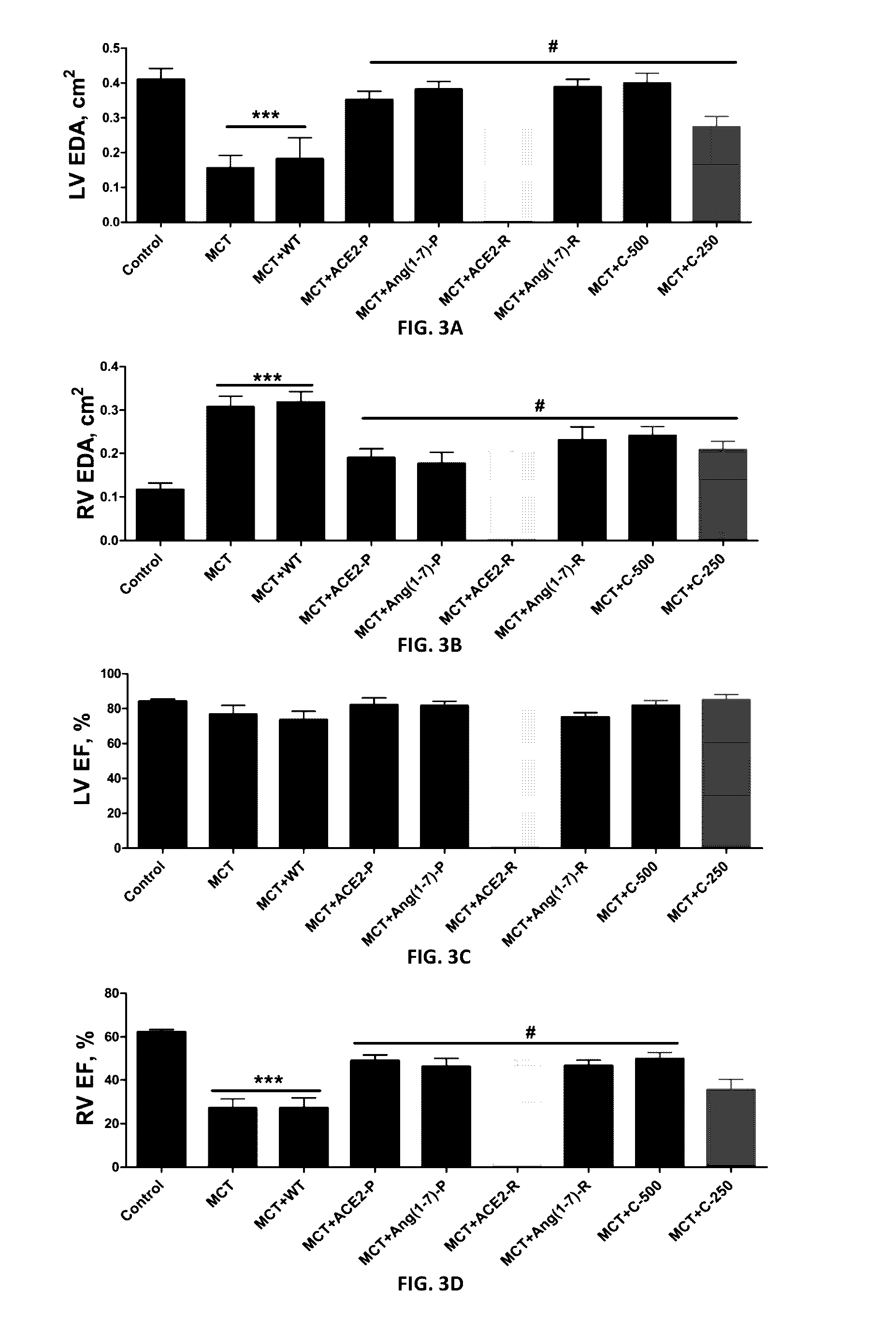Oral delivery of angiotensin converting enzyme 2 (ACE2) or angiotensin-(1-7) bioencapsulated in plant cells attenuates pulmonary hypertension, cardiac dysfunction and development of autoimmune and experimentally induced ocular disorders
angiotensin converting enzyme and angiotensin-(1-7) bioencapsulation technology, applied in the direction of plant/algae/fungi/lichens ingredients, peptides, peptides, etc., can solve the problems of inability to reverse ph or decrease mortality, no current treatment is successful in reversing ph or decreasing mortality, and clinical use of ace inhibitors or at1r blockers has yielded mixed results. ,
- Summary
- Abstract
- Description
- Claims
- Application Information
AI Technical Summary
Benefits of technology
Problems solved by technology
Method used
Image
Examples
example 1
REFERENCES FOR EXAMPLE 1
[0088]1. Schermuly R T, Ghofrani H A, Wilkins M R, Grimminger F. Mechanisms of disease: pulmonary arterial hypertension. Nat Rev Cardiol 2011; 8:443-455.
[0089]2. Sutendra G, Michelakis E D. Pulmonary arterial hypertension: Challenges in translational research and a vision for change. Sci Transl Med 2013; 5:208sr5.
[0090]3. de Man F S, Tu L, Handoko M L, Rain S, Ruiter G, Francois C, Schalij I, Dorfmüller P, Simonneau G, Fadel E, Perros F, Boonstra A, Postmus P E, van der Velden J, Vonk-Noordegraaf A et al. Dysregulated renin-angiotensin-aldosterone system contributes to pulmonary arterial hypertension. Am J Respir Crit Care Med 2012; 186:780-789.
[0091]4. Morrell N W, Atochina E N, Morris K G, Danilov S M, Stenmark K R. Angiotensin converting enzyme expression is increased in small pulmonary arteries of rats with hypoxia-induced pulmonary hypertension. J Clin Invest 1995; 96:1823-1833.
[0092]5. Donoghue M, Hsieh F, Baronas E, Godbout K, Gosselin M, Stagliano N, ...
example2
Oral Delivery of ACE2 / Ang-(1-7) Bioencapsulated in Plant Cells Protects Against
Experimental Uveitis and Autoimmune Uveoretinitis
[0146]The following materials and methods are provided to facilitate the practice of Example II.
Chloroplast Transformation Vector Construction and Regeneration of Transplastomic Lines
[0147]Performed as described above in Example I.
Animals and Experimental Procedures
[0148]Wild-type C57B1 / 6J mice (6-8 weeks old)) and B10.RIII mice (8-10 weeks old) were purchased from Jackson Laboratories (Bar Harbor, Me.) and maintained at the Animal Care Service at the University of Florida. All procedures adhered to the ARVO statement for the use of Animals in Ophthalmic and Vision Research, and the protocol was approved by the Animal Care and Use Committee of the University of Florida. The animals were fed standard laboratory chow and allowed free access to water in an air-conditioned room with a 12-12-hr light dark cycle.
[0149]The mice were divided in three groups for EIU...
example 2
REFERENCES FOR EXAMPLE 2
[0185]1. Mochizuki M, Sugita S, Kamoi K (2013) Immunological homeostasis of the eye. Prog Retin Eye Res 33: 10-27.[0186]2. Read R W (2006) Uveitis: advances in understanding of pathogenesis and treatment. Curr Rheumatol Rep 8: 260-266.[0187]3. Rosenbaum J T, McDevitt H O, Guss R B, Egbert P R (1980) Endotoxin-induced uveitis in rats as a model for human disease. Nature 286: 611-613.[0188]4. Agarwal R K, Silver P B, Caspi R R (2012) Rodent models of experimental autoimmune uveitis. Methods Mol Biol 900: 443-469.[0189]5. Paul M, Poyan Mehr A, Kreutz R (2006) Physiology of local renin-angiotensin systems. Physiol Rev 86: 747-803.[0190]6. Santos R A, Ferreira A J, Verano-Braga T, Bader M (2013) Angiotensin-converting enzyme 2, angiotensin-(1-7) and Mas: new players of the renin-angiotensin system. J Endocrinol 216: R1-R17.[0191]7. Marian A J (2013) The discovery of the ACE2 gene. Circ Res 112: 1307-1309.[0192]8. Santos R A, Simoes e Silva A C, Maric C, Silva D M,...
PUM
| Property | Measurement | Unit |
|---|---|---|
| Thickness | aaaaa | aaaaa |
| Biological properties | aaaaa | aaaaa |
Abstract
Description
Claims
Application Information
 Login to View More
Login to View More - R&D
- Intellectual Property
- Life Sciences
- Materials
- Tech Scout
- Unparalleled Data Quality
- Higher Quality Content
- 60% Fewer Hallucinations
Browse by: Latest US Patents, China's latest patents, Technical Efficacy Thesaurus, Application Domain, Technology Topic, Popular Technical Reports.
© 2025 PatSnap. All rights reserved.Legal|Privacy policy|Modern Slavery Act Transparency Statement|Sitemap|About US| Contact US: help@patsnap.com



